A part that is missing never breaks
Matilde CASSANI · Marianna CHRISTOFIDES · Julie SAS · belit SAǦ with Aşkın ERCAN, Rezzan GÜMGÜM, Seçil YAYLALI

The exhibition A part that is missing never breaks debates possibilities of escaping from the prevailing visibility regime of the present, strategies of dealing with the unknown, with loss of reason and censorship as signifiers of our time, but also with forms of solidarity and (self-)awareness-raising. It aims at opening a discourse on the current status of social cohesion, on the valence of decisions of presence and absence, on the possibility of being able to make such decisions at all. The exhibition argues in favor of upgrading what we may not readily see as a necessary part of the given system, but the existence and availability of which determine any given social eco-logic.
A part that is missing never breaks is the outcome from the involvement with the projects and working methods of the participants in the Fellowship Program for Art and Theory at Künstlerhaus Büchsenhausen 2017–18, whose artistic approaches, procedures and themes formed the starting point of the exhibition concept. Marianna Christofides traced specific “errant” manifestations of uncertainty, the various forms and different characteristics of which have been unfolding since the crisis year 2008 in South-East Europe. Against the background of a state of everlasting instability that became a societal norm by now, she inquired about the abstract place in which this uncertainty has been established, the implications triggered by such an analysis, and the modalities by which artists can approach a state that inherently opposes any kind of understanding. belit sağ explored the concept of “censorship” as a contemporary state of mind. Starting out from her very own experience with censorship as an artist in Turkey, she invited three other artists from her country – who had all personally experienced censorship – to Innsbruck for a productive exchange. The project investigated ways in which the individual and emotional experience of censorship can be shared with others, what artistic tactics are appropriate when responding to such repression, what subjectivities generate censorship, and how this subjectivation takes its course through affect. In her project in Büchsenhausen Julie Sas was concerned with open forms of anonymity and invisibility, but also with concrete opportunities for withdrawal. Anonymity, invisibility, disappearance, avoidance, secrecy or silence were viewed as possible ethics and positions, as forms of opposition against a contemporary paradigm claiming to merge being and semblance on the one hand and value and visibility on the other. Finally, within the framework of a cooperative fellowship from Künstlerhaus Büchsenhausen and ar/ge kunst Bolzano, Matilde Cassani worked with communities of passionate cricket players living on both sides of the Brenner Pass, some for decades now, but, nevertheless, lack any public visibility. In a region where the leisure (=tourism) industry forms a dominant source of prosperity, the artist explored the conditions under which this sport is practiced as a spare time activity.

A part that is missing never breaks is an apparently apodictic assertion that, upon closer examination, reveals its paradoxical nature: the verb “missing” indicates that the part referred to existed and was in use in the past. Through an unspecified degree of use, in fact „a part“ could indeed potentially break. But as long as the circumstances leading to its missing are not clearer, however, the assertion cannot either be refuted. Therefore, the assertion and its potential truth operate in a space of meaning dominated by a supposed certainty, which can be perceived as such only through the process of its own emergence from the unspecific.

The installation Imposture (digression on adornment) by Julie Sas plays with this ambiguity. As a provisional materialization of her preoccupation with forms of disappearance and becoming invisible, the artist has produced a semantic experimental setup in form of a stage-like setting, tensely interlocking two existential modes of anonymity: in opposition to a rigid state of impersonality, of namelessness, to the lack of qualities and immateriality of the body (that is the “passive” mode), she sets potentially dynamic tactics that blur the boundaries, aiming for the production of differentness, breaches in identity, discontinuity, and opacity (that is the “active” mode). The artist unfolds a sculptural ensemble against the background of a wallpaper that partially alienates the layout of the given space by rounding the corners of the room and creating a pattern that obviously seeks to confuse the eye. This “razzle-dazzle”, this camouflage, consists of dressmaking patterns available to download free online. Sas “individualized” the patterns with black bars executed by hand, then scanned and assembled them into an overall pattern. Standardization thus turns into ornamentation, and the oscillation between the generic and the specific, between normativity and eccentricity as a means of design become evident. The artist applies this technique consistently in the sculptural works: within the dialectic field of tension between the aforementioned parameters, their components articulate on various levels the search for possibilities of physical disguise by turning the generic against itself. Thus, the installation comprises objects and components generally used as “stylistic improvement prostheses”, which appear here, however, as a setup alienating this significance; masks are covered in colored geometric patterns that seek to undermine the face-recognition algorithms of CCTV cameras; a shop dummy head wears spectacles in form of a black bar; collaged scraps of self-printed newspapers with invented content (also freely available and designable online) cover shop dummies’ hands etc. Finally, the installation is hold together once more on the auditive level: from time to time, we hear a computer voice from the mobile telephone lying in the hand covered with newspaper. It is reading out passages from “How to disappear completely and never be found” by Doug Richmond: a practical guide to disappearance published in the 1980s. The occasionally scurrilous sound of the artificial voice is achieved with the help of the program Auto-Tunes, a software popular in the field of music which was developed to retrospectively correct voices when singing off key.
In contrast to Julie Sas’ work, the installation Single Traces, Common Grounds by belit sağ in cooperation with Aşkın Ercan, Rezzan Gümgüm and Seçil Yaylalı deals with processes of disclosure and solidarity in face of the increasingly restrictive regulation of professional as well as personal relationships. Specifically, it is about the experience of censorship (which the artists underwent themselves) and (public) articulation of this experience as a form of collective re-empowerment. Usually, censorship is discussed in connection with legal processes or institutional responsibilities but only rarely with respect to the personal, emotional and artistic changes it brings about. As belit sağ particularly emphasizes, censorship is similar to mobbing and harassment. In all three cases, strategies of rendering invisible and silencing are employed – whereby individuals are often left in a position of isolation. Cases of censorship can often be difficult to articulate and explain to outsiders. The emotions arising in artists as a result of censorship are the central theme of this project.

In the exhibition, therefore, several symbolically-charged works are displayed, all dealing with opposition against censorship. Sağ, Ercan, Gümgüm and Yaylalı have produced them in varying constellations via an intense process of collective creativity: Already before entering the exhibition space, visitors are greeted by a white noise: listening more carefully, one can hear fragments of a conversation. The noise is reproduced also in the back room of the Kunstpavillon, where the same conversations – in Turkish language – can be followed on a flat screen, this time better understandable and with support of a written translation into English. The texts are Skype dialogues on the topic of censorship between the four participating artists. On a second flat screen mounted in a vertical position, a video runs in a loop, showing ivy plants at different stages of growth and in various positions (belit sağ and Aşkın Ercan). Here, at the latest, it becomes clear that ivy forms the visual leitmotif of the entire installation. It is well-known that ivy grows under difficult climatic conditions, its growth is hard to control, and that the plant has a reputation for damaging inflexible structures (i.e. buildings). Here, these qualities are understood expressly and throughout as positive, as the idea of a potentiality that aims at breaking repressive power structures stays at the core of the project. The fact that traces of opposition remain, even when the plant is pulled down, is visualized by the objects mounted in the back room as well as on the facade (Seçil Yaylalı and belit sağ). In the front room of the exhibition there is a geometrically structured sculpture in black and silver shades. It evokes a “black box” collection of uninvestigated cases of censorship, which Gümgüm and sağ pulled in the course of a performative action from Künstlerhaus Büchsenhausen via the Inn bridge next to the old town to the Kunstpavillon on 8 May 2018. The object is supplemented by two videos, which, each in a slightly different version, present the “scan” of an ivy leaf (Aşkın Ercan and belit sağ). Finally, the ensemble is completed by a mindmap-like graphic work and a takeaway poster in the back room (both Seçil Yaylalı and belit sağ). The graphic work visualizes, in an imperative manner, actions and principles to prevent or limit a case of censorship, which should turn the censorship into a positive situation for the artist affected. The take-away poster reproduces sayings and statements by participants in a workshop on the subject in Künstlerhaus Büchsenhausen. The texts aim towards the empowerment of those potentially affected by censorship, but also address a larger community as a guideline for how to engage and prove solidarity.
In the installation IT EXHAUSTS MY ELBOW [1] Marianna Christofides investigates involuntary invisibility. The artist focuses on existences and places she has sought out during the past ten years in Greece, documenting in regular intervals their lives respectively the transformation of the buildings. As part of her long-term artistic investigation The Hiatus of Uncertainty, here Christofides is concerned with the complex contexts and confusions that an investigation into the forms and manifestations of uncertainty, especially when it becomes a normalized, everyday reality, is able to reveal. For the exhibition, the artist has composed visual constellations that give account to this now omnipresent phenomenon in its various, continually changing manifestations. The places and stories captured using documentary means (predominantly on 16mm film) do not necessarily represent the specific geographical and social locations of their shooting, but, above all, a set of globally spreading social symptoms. Understanding these could also mean overcoming them.

In the exhibition, Christofides focuses on four failed, large-scaled building projects and the people that utilize them today. There is Kalivia Olympou (English: Olymp’s Sheds), a settlement outside Athens that was intended for employees of the American-Express-Bank and their families in its day but had to be abandoned at the bare brickwork level. Nevertheless, some former employees moved in and made a few of the structures habitable. Whereas they are able to get water from ground water pumps, they have been living without electricity for years. There is Azad from Iran, one of the homeless migrants finding shelter on the extensive site of an incomplete hotel construction project, built during the junta regime in the 1970s. His “place of residence” is transformed regularly at the weekends into a leisure area, where on Saturdays young people organize AirSoft competitions that simulate urban guerrilla battles. At night, underground techno parties take place, organized by autonomous Athenian groups. There are several Roma families who live on the site of a decaying factory in Piraeus, among them Marina and her seven children. The roughness of the ruined industrial site does not prevent the children from using it as their playground. And finally, there is Spyros, an associate in a large drive-in cinema during the 1970s and 1980s; since the decline of the business he has lived in the site’s former snack kiosk for what has now been 20 years. When business began to dwindle he attempted to stay afloat with porn films. When these began to fail as well, he closed the cinema; the former screen became a huge billboard advertising the sale of the ground it stands on. In the meantime, even the last 35mm projector has been sold as scrap metal.

Christofides documents the places and the living conditions of these people without evoking any explicit consternation. Rather, she shows them in their complexity as cumulated evidence of the dominant world system’s conditions, in which lives and places can be deterritorialized and anonymized to equal degrees, without ever being able to predict reliably how such socio-economic processes are set in motion. Nevertheless, the foreshadowing of vulnerability as a possible form of opposition that may lead potentially to re-empowerment shimmers through the 420 slide images, which the artist has gathered in an archival arrangement on the wall of the exhibition space. Visitors can work their way through these like detectives (using a magnifying glass) and so create their own personal visual narration. The images are single frames from 16mm reels, filmed at the aforementioned places in the years 2015–17. Christofides has mixed the places and people as well as the original linear narration, and has so generated new patterns of meaning, which enable a transversal mode of reading. The risographs also show transposed individual 16mm images, which reveal a haptic-atmospheric component by focusing the view on details and their conceivable interconnections. The translucent ceiling script VE-IN CINEMA, finally, paraphrases the remaining fragment of writing at the back of Spyros’ former drive-in cinema screen and provides the metaphorical frame that conceptually holds together the different components of the installation.

The contribution by Matilde Cassani, which is installed in Künstlerhaus Büchsenhausen, makes use of a different for of visualization. It’s just not cricket is more than a simple display of cricket equipment including the objects connected with the sport, although it may seem this way at first glance. The idiomatic meaning of the title – the origin of which, like the game of cricket itself – lies in the English culture, arouses the suspicion, however, that all this may have something to do with injustice: the expression is always used when talking about a matter that is unfair or unfrank.

A colored carpet, large, oversized wickets, a ball and two bats, each produced in North and South Tyrol using local woods: these are the components of the setting for an apparently interrupted game, now installed in the exhibition space in Büchsenhausen and waiting, so to speak, for the the players to return. A “display altar” shows a collection of cricket bats, balls and trophies waiting to be used again soon. This encounter with the passion of young cricket players originally from Pakistan, Afghanistan, India or Sri Lanka, some of whom have lived in communities on both sides of the Brenner Pass for decades, offers respite from the usual rhetoric of identity, borders, and of North and South. The circular history of cricket, which has returned to Europe from the British colonies, now spreading here under very different circumstances, provides the opportunity to reflect on the values of today’s urban and rural environments, as well as to challenge the categories of time, entertainment, spectacle and spectatorship.
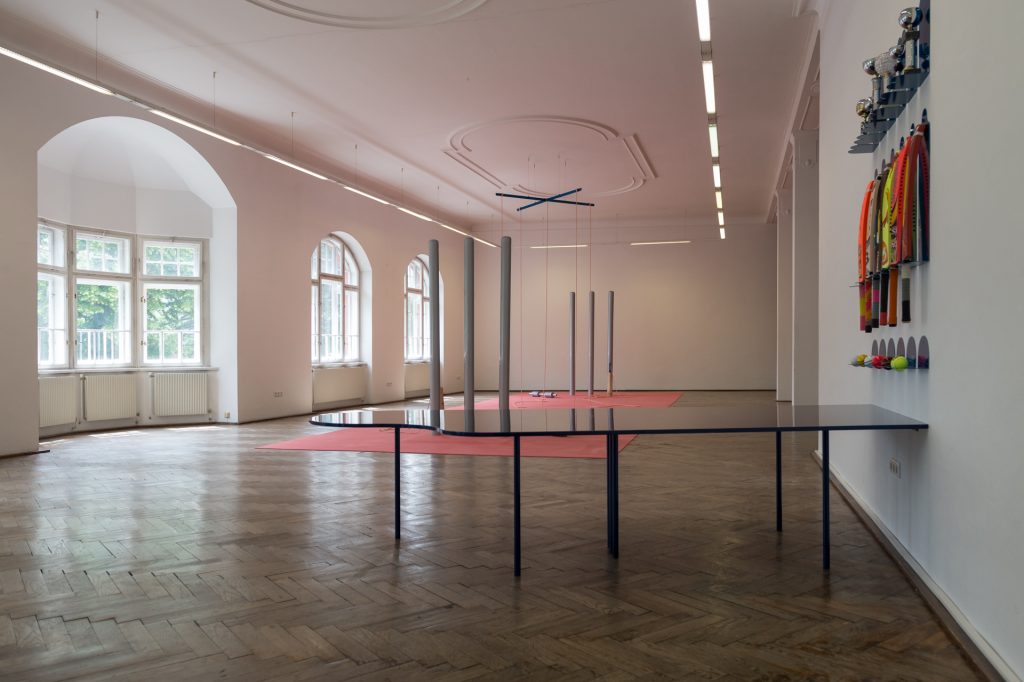
It’s just not cricket is the conclusion to the eponymous research project by Matilde Cassani, which was initiated and realized following a joint invitation by Künstlerhaus Büchsenhausen, Innsbruck, and ar/ge kunst, Bolzano. After repeated visits to the larger region between Innsbruck and Bolzano the artist made since the end of 2016, the exhibition at ar/ge kunst in Bolzano (February – May 2018) and the current exhibition of the Fellowship Program for Art and Theory in Künstlerhaus Büchsenhausen provide the framework for the discursive investigation into the aforementioned themes. Workshops with the respective cricket communities on both sides of the Brenner Pass, as well as a planned match between selected North and South Tyrol teams in Innsbruck on 30 June 2018 (Sportplatz Fenner, Kaiserjägerstraße) intend to intensify the public dialogue with and between these groups.
A part that is missing never breaks is dedicated to our fellow and colleague Jan Sieber (1982–2018). The title of the exhibition relates not least to him and to his – ultimately lost – battle against cancer.
Text: Andrei Siclodi (Matilde Cassani: Emanuele Guidi and Andrei Siclodi)
______________
[1] I woke up with this marble head in my hands; / it exhausts my elbow and I don‘t know where to put it down. […] From: George Seferis: Mythistorema, in: Collected Poems, Princeton University Press, 1995
______________
Exhibition Details:
Opening on Thursday 24 May 2018 at 19.00 in the Kunstpavillon of the Tiroler Künstler:innenschaft and at 21.00 in the Künstlerhaus Büchsenhausen
Welcoming: Katharina Cibulka, Member of the board
Introduction: Andrei Siclodi, Curator
Duration of the exhibition: 25 May – 28 July, 2018
Exhibition venue: Kunstpavillon and Künstlerhaus Büchsenhausen
Opening hours: Wed-Fri 11.00-18.00, Sat 11.00-15.00 and by appointment.
Closed in Büchsenhausen: 6 June, 22 June, 4 July 2018 and on public holidays.
The participating artists:
Raised in Cyprus and currently working in Berlin, Marianna CHRISTOFIDES deals in her practice with entangled stories that constitute the different layers of multi-authored places. Imprints of slow violence in the spatial fabric and subtle manifestations of precarity are negotiated in long-term observations and a physical engagement with the sites under study. Investigating the singularities and latent narratives of often contested places, she is revisiting them over and over again. This recursive return is a means to approach the complicated and fragmented histories of people in different regions.
Christofides represented Cyprus in 2011 at the 54th Venice Biennale. She has been exhibiting internationally, among others at Akademie der Künste, Berlin; BOZAR, Palais des Beaux-Arts, Brussels; National Museum of Contemporary Art, Bucharest; GAK Gesellschaft für Aktuelle Kunst, Bremen; Videonale. 17, Kunstmuseum Bonn; Museo Riso, Palermo; Museum für Gegenwartskunst, Siegen; Kunstpavillon, Innsbruck; Museum of Modern and Contemporary Art, Rijeka; 5th Thessaloniki Biennale; National Museum of Contemporary Art, Athens; Museum für Photographie Braunschweig. Residencies include: Villa Kamogawa, Goethe-Institute, Kyoto; Künstlerhaus Büchsenhausen, Innsbruck; Tabakalera, San Sebastian; IASPIS, Stockholm; Villa Aurora, Los Angeles; Gasworks, London. In 2019 Christofides was shortlisted for the Berlin Art Prize.
In cooperation with Künstlerhaus Büchsenhausen, Marianna Christofides published the book Days in Between (2021).
belit sağ lebt als Videokünstlerin in Amsterdam. Sie studierte Mathematik in Ankara und audiovisuelle Kunst in Amsterdam. Ihre Video-Praxis entwickelte sich in video-aktivistischen Künstler:innen-Gruppen in Ankara und Istanbul, wo sie Projekte wie karahaber.org (2000-2007) und bak.ma (ein wachsendes audiovisuelles Onlinearchiv für soziale Bewegungen in der Türkei) mitinitiierte. Ihre aktuelle Arbeit konzentriert sich auf die ‚Gewalt der Darstellung‘ beziehungsweise die ‚Darstellung der Gewalt‘. Ausgehend von ihrer eigenen Erfahrung mit Zensur in der Türkei lädt sağ im Rahmen ihres Fellowships in Büchsenhausen drei Künstlerinnen aus diesem Land, die ebenfalls persönlich Opfer von Zensur waren, nach Innsbruck ein. Durch einen offenen Austausch mit diesen Künstlerinnen beabsichtigt sağ, die Prozesse offenzulegen, die Künstler:innen auf Grund von Zensur durchmachen müssen, sowie die Auswirkungen auf ihr jeweiliges Leben und den jeweiligen künstlerischen Ausdruck. Das Projekt will erforschen, wie die individuelle und emotionale Erfahrung von Zensur mit anderen geteilt werden kann, welche künstlerische Taktiken als Antwort auf Repression taugen, welche Subjektivitäten Zensur erzeugt und wie diese Subjektivierung durch Affekte verläuft.
Sie absolvierte Residiencies in Rijksakademie van Beeldende Kunsten, Amsterdam vom 2014-2015; und das International Studio and Curatorial Program, New York in 2016. Sağs Arbeiten wurden in zahreichen Museen, Gallerien und Filmfestivals weltweit präsentiert. Unter anderem MOCA, Taipei; Tütün Deposu, Istanbul; Tabakalera Film Seminar, San Sebastian; Toronto/Rotterdam/San Francisco/New York International Film Fest./International Documentary Film Fest. Amsterdam (IDFA); EYE Filmmuseum, Amsterdam; documenta14, Kassel; Marabouparken, Stockholm.
bit.contrast.org
Julie SAS is a French artist based in Paris. In her practice she combines installations, writing, performance and collaborative projects, in which she organizes spaces and situations around plays on meanings, norms and identities that demonstrate a tension with certain linguistic or social data. Sas’ recent live installations present bodies involved in codified situations, particularly those linked to the production of public discourse, forms of self-representation, and quotation exercises. Those have led her to start developing long-time research and experimentation on the practice of anonymity and forms of invisibility in art, literature and musical fields.
juliesas.blogspot.com
Aşkın Ercan is a video maker and painter who lives and works in Turkey. Her recent paintings focus on urban life, humanity and memory through portraying humans who are lost and sometimes visible in urban life. Her recent videos are performance-based and often experimental. Her most recent solo show is The Girl on the Wire, TAC Gallery, Tusla/Oklahoma, USA 2018. Her recent group shows include The Settlement of Time, 27th İstanbul Art Fair, 2017; and Crossing Borders, Living Art Tulsa, USA, 2017. Currently she is a PhD candidate at the Gazi University, Department of Fine Arts in Ankara, Turkey.
Rezzan Gümgüm is a visual artist living and working in Ankara. She studied art education and fine arts at Gazi University and the Macerata Academy of Fine Arts in Italy. Currently she is a PhD candidate at the painting department of the Institute of Fine Arts, Hacettepe University, Ankara. Her research practice is object-based and often takes the form of installations and installations in public space. In her recent works, Gümgüm uses stone and concrete as metaphors that reference eastern traditions and connect them to current political events. Her work has mainly been exhibited in Turkey and Italy.
Seçil Yaylalı is an artist and educationalist with expertise in the fields of urban planning, industrial design and art. She was a co-founder of PASAJ, an artists’ initiative based in Istanbul, which works together with various social communities and facilitates corresponding projects, exhibitions and workshops. Yaylalı teaches Design and Contemporary Art at the Technical University in Istanbul.










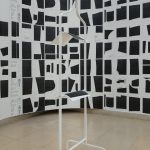














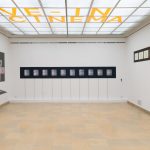
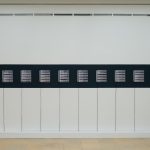
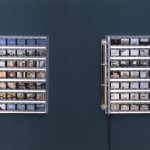

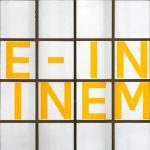




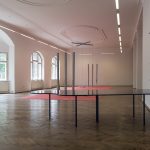




Location
Kunstpavillon
Rennweg 8a, Innsbruck
Künstlerhaus Büchsenhausen
Weiherburggasse 13, Innsbruck